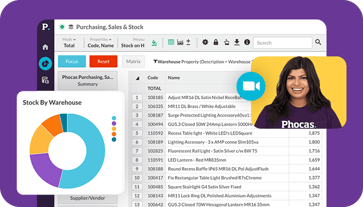Chief Executive Dashboards: Some Points to Consider
Why Dashboards?
The Chief Executive needs a good overview of an organization. Yes, he or she will need to have a good grasp of the more complex details behind a company’s performance and will undoubtedly want to carry out some in-depth analysis of different issues within the business from time to time.
But at any one moment, a Chief Executive also needs an up-to-date snapshot of key operating issues that enable someone in a leadership role to keep a firm hand on the tiller.
A really good analogy for this is using a Sat Nav to guide you when you’re driving. Sure, you need to take account of a host of factors in order to drive safely from A to B, but a quick glimpse at a Sat Nav gives you the instant means to stay on course. So it is with dashboards, which give you that momentary summary that enables minute to minute navigation of your company’s affairs.
Key elements?
Elements within a dashboard can be an assortment of vital statistics, warnings, alerts and trends. The facets can be represented in numerical or graphical format: whichever, it must be capable of being easily understood in a moment.
1. Financial
There are several key areas that a Chief Executive dashboard needs to highlight. First and foremost amongst these is financial performance. This is the primary benchmark against which the health of a company is judged, and so is the first thing that needs to be grasped. Where are we at, in terms of current revenue and profit, against budgets, against prior year and against forecast?
Numerical grids or basic graphs are the most common types of presentation for this element.
2. Business Development
If the financial element covers performance of existing business, perhaps the next thing to look at is new business. What is the current pipeline of new business looking like? This can be a measure of the number of appointments that have been booked for potential new customers; again judged against target and against prior year. A traffic-light format is often preferred for this representation.
3. Customer Service
Another important issue is the question of how well the customers are being looked after. In this element are issues such as the number of customer support cases that are currently unresolved (vs target & previous year) and what the average length of time that it’s taking to resolve them is.
This of course has implications for both the cost of doing business (customer support can be expensive) and for the company’s reputation in its market place. Customer Service has been the making or breaking of many commercial organizations. So a rapid overview of performance in this area is vital.
4. Debtor Days
Increasingly, and especially in financially-straitened times, there is a trend for customers to try to get longer & longer periods to pay up from their suppliers. The average number of days which customers take to settle their bills can be a critical factor to the financial wellbeing of a supplier’s business. Also to take into account is the average debtor days trend, as well as against target.
For this reason this kind of debtor day’s analysis is extremely useful for a Chief Executive.
5. Other Elements
Another area of potential concern is that of vulnerability. For this, two aspects are worth looking at: firstly the company’s customer retention rate – what proportion of the customer base is lost annually? Again a traffic-light type display of gained & lost customers against target and against prior year is worthwhile.
Secondly, many CEO’s like to know what proportion of the company’s top customers are delivering a percentage of the company’s overall revenue. The 80/20 Rule is the most commonly cited here, or in other words, “Are we getting 80% of our business from our top 20% of customers?”
Understanding what the potential loss of one or more of those top customers would have on the business in percentage terms is definitely worth knowing.
Summary
The Chief Executive needs to know a handful of business-critical things about the company in order to have a finger on its pulse 24/7.
A BI dashboard with a few representations of these elements can provide that snapshot without having to engage in detailed report generation or analysis.
It can alert a CEO to threats, give indications of potential opportunities which may be developing and chart the trends of a company’s health.
If you’re interested in looking at what Phocas BI can offer to the busy Chief Exec, please get in touch!

Related blog posts

Picture a football coach preparing for the big game. He watches game‑tape, studying player metrics, analyzing every play and using real‑time stats to inform strategy. That’s exactly how sales managers and sales leaders should approach their coaching program—with a data‑driven approach.
Read more
Sales professionals operate in face-paced environments with savvy customers who have a lot of choice. Whether you're in B2B sales or working with consumers, the sales process is challenging with longer sales cycles, more decision-makers and higher expectations for follow-up and advice. To stay competitive, sales reps and sales teams need the best sales tools to reduce administrative tasks and improve sales team performance.
Read more
“Free BI tools trial, business analytics software for free, free BI reporting with AI-powered insights”– these offers are tempting business people all the time especially as new open-source players enter the market and want cut-through.
Read more
For many sales professionals, the phrase daily sales report used to conjure up thoughts of frustrating delays and data that's already stale by the time it is received. Often these reports were created by the IT or finance team who had a long list of requests, so the information was more of an historical snapshot. Fortunately, the creation of sophisticated data analytics has improved this work, transforming sales reporting into a self-service and quick task.
Read more
Find out how our platform gives you the visibility you need to get more done.
Get your demo today